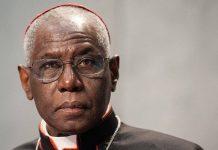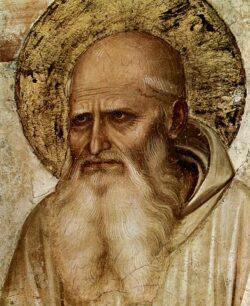Almost a thousand years ago, Saint Romuald settled with five disciples in the hermitage of Camaldoli, Italy. He had no idea that this small institution would become a center of prayer and culture that would span the centuries, extending its radiance to the present day.
Newsdesk (June 21, 2021, 01:17, Gaudium Press) Romualdo was the son of Sergius I, Duke of Ravenna, a man of the highest medieval nobility, but worldly and very aggressive. It was not he, therefore, who taught the boy the way to sanctity. But he was the protagonist of a tragic event that marked his son’s life forever and made him decide to become a religious man.
Around the year 972, Duke Sergius fought a duel with an enemy – apparently one of his brothers – over a land dispute, killing him with a sword. And Romoaldo, then 20 years old, was a witness to the brutal scene.
He saw the dead man lying on the ground, with his wounds gushing blood. On the other side, he saw the fierce face of his father, and he realized at a glance the awfulness of a man dominated by unruly passions. Deeply shocked, he decided to abandon the vain pleasures of worldly life and become a monk.
Great progress in a short time
He then set out to find solitude in the mountains, stimulated by the grace of God that whispered in the depths of his soul:
“Blessed are the hermits who turn away from the world and isolate themselves in those solitudes, where they are not enslaved by bad customs and bad examples!”
He found a Benedictine monastery and asked for admission there. However, the superior, fearing a violent reaction from the Duke, hesitated to accept him. Only after the intervention of the Archbishop of Ravenna, who served as an intermediary, did the young man manages to be admitted.
The new monk spent three years in this convent, dedicated to prayer and penance. The other brothers, being lax, felt uncomfortable by the newcomer’s great zeal and eventually asked the superior to remove him from the convent.
Romuald then decided to go and live in Venice, where he lived a life of total isolation. Divine Providence put in his path a strict and exceptionally austere hermit, Marino, under whose direction he made considerable progress on the road to sanctity in a short time.
“The Doge is gone!”
Together with Marino, Romuald achieved two remarkable conversions: the Duke of Ravenna, his father, repented his former life of sins and went to do penance in a convent. And that of the Doge (the supreme ruler) of Venice, a city-republic that was to become a great power.
On a sunny summer morning in the year 978, a cry of alarm sounded in that city: “The Doge has disappeared!” No one knew the whereabouts of Pietro Urseolo. The news caused a great stir. Only two years before, conspirators murdered his predecessor and also destroyed the Ducal Palace.
Fortunately, this time there was neither a conspiracy nor a murder. The nobleman had fled at night, accompanied by Romualdo, on a long journey to the Benedictine monastery of San Miguel de Cuxa, in the Pyrenees, Catalonia, to dedicate himself to prayer and contemplation.
There he would die as a simple monk, after ten years of austere and humble life. Since 1731, the Holy Church has celebrated him with the glorious title of Saint Peter Urseolo.
The foundation of Camaldoli
After five years in Catalonia, Romualdo returned to Italy and traveled around that country for thirty years, founding monasteries and hermitages.
Wishing to lead a life of complete isolation, he received some land from a certain Maldolus, which later became known as Campus Maldoli. Around 1025, Romuald and five companions built six small houses and a chapel there, in the middle of the rugged mountains.
One hermit lived in each house in complete silence and isolation, praying, meditating, offering sacrifices for the conversion of sinners and the coming of the Kingdom of God. And so, it continued throughout the centuries.
Today there are twenty simple houses lined up on either side of a narrow street. Each one contains a tiny chapel, a bookcase, a desk, a bed, and a workshop for manual labor. All of them lacking comfort but very full of symbolism and grace!
The Monastery
A short distance from the hermitage, St. Romuald had a building constructed to serve as a guesthouse, infirmary, and administrative office. So the contemplative life of the hermits would not be disturbed by any material concerns.
Today the Camaldolese also have communities in California (United States), Banda Aceh (Indonesia), and Mogi das Cruzes (Sao Paulo, Brazil).
Camaldoli was the last foundation of Saint Romuald. This man of God, who from his youth had no other aspiration than to live isolated on some mountain in close contact with his Redeemer, ended up leading the life of an “itinerant abbot” for half a century.
At the end of his career on earth, he went to receive the crown of glory in heaven. He had reformed or founded about 100 monasteries and hermitages, with the rule of St. Benedict, populating them with thousands of monks and hermits guided by him on the paths of perfection.
He had a holy death in a small cell in the hermitage of Val-di-Castro, in the year 1027. The Church canonized him in 1595.
Text compilled by Ena Alfaro.
With files from the magazine Heralds of the Gospel n. 46, October 2005.




































